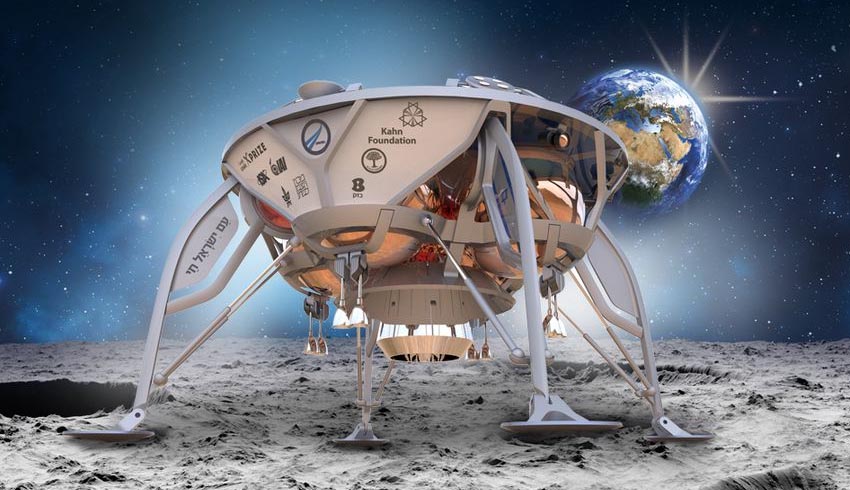That will make Israel just the fourth nation to place a probe on the moon and the first to do it as a private venture not sponsored by a national government.
The USSR was first in 1966, followed by the US four months later. China landed a probe on the moon in 2013 and again earlier this year. The Israeli probe was launched from Cape Canaveral aboard a Falcon 9 rocket, one of SpaceX's commercial launches, on 21 February.
That follows nearly eight years of hard work by Israel Aerospace Industries (IAI) and SpaceIL, an Israeli non-profit organisation funded mostly by philanthropists and involving companies, universities and a very large number of school students.
This was prompted by the 2007 Google Lunar XPRIZE, which offered US$20 million to the first private venture to land a robotic probe on the moon, travel 500 metres and transmit high definition stills and video back to Earth.
A large number of contenders expressed interest but despite a number of extensions, no-one had booked a launch by the final deadline of March 31, 2018 and the contest was called off.
Israel decided to proceed and its venture coincides with the 50th anniversary of the first manned landing on the moon.
This has a pricetag around US$100 million, expensive but still a bargain by the standards of commercial satellite launches, let alone moon probes. At 160 kilograms, Beresheet will be the smallest spacecraft to land on the moon, and the cheapest.
Although it has been tested extensively in the IAI facilities used to prove Israel’s satellites, Beresheet won’t have a long service life. It has no redundant systems and neither will it deploy a robotic probe as the original Google challenge envisaged.
After landing, Beresheet will measure and transmit data on the moon’s magnetic field for two or three days, when it’s expected the sun’s heat will destroy elements of the communications system and the mission will end.
Beresheet does carry a time capsule containing digital files of, among much else, a Bible, a copy of Israel’s declaration of independence and memoirs of a holocaust survivor. These will then join the silent remnants of man’s other moon missions.
Although SpaceIL missed out on being eligible for the US$20 million prize, it’s to be awarded US$1 million by XPRIZE on achieving a successful moon landing.
"Though the Google Lunar XPRIZE went unclaimed, we are thrilled to have stimulated a diversity of teams from around the world to pursue their ambitious lunar missions and we are proud to be able to recognize SpaceIL’s accomplishment with this Moonshot Award," said Anousheh Ansari, XPRIZE chief executive.
XPRIZE founder Peter Diamandis said SpaceIL’s mission represented the democratisation of space exploration.
"We are optimistic about seeing this first domino fall, setting off a chain reaction of increasingly affordable and repeatable commercial missions to the moon and beyond," he said.

